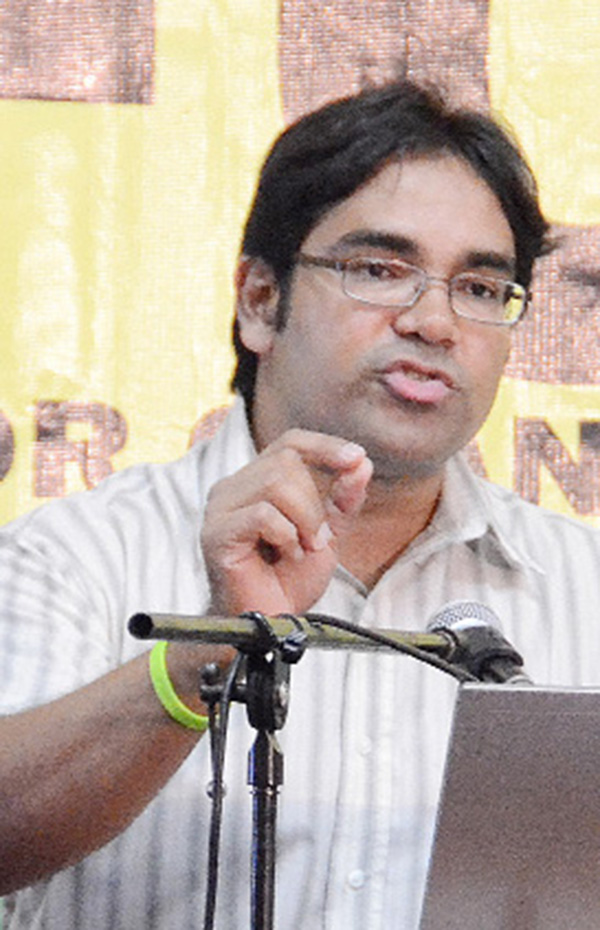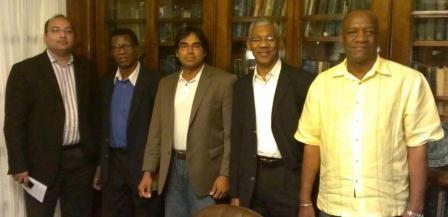July 26 ,2021

Tarron Khemraj
Economist Tarron Khemraj has flayed the government for suggesting it may follow the Kazakh model for the still-to-be-created Natural Resource Fund (NRF) and he lamented the continued absence of oil production data in official statistical reports.
In his column in yesterday’s Sunday Stabroek, Khemraj said that it has been pointed out by several observers that the money from Guyana’s share of the oil profits in the Federal Reserve Bank of New York does not constitute a NRF but the account is merely holding the oil revenues at almost zero percent yield.
“Operationalisation of the Fund means, among other things, at minimum, the government hires qualified individuals to manage the monies and release funds consistent with its budget priorities subject to parliamentary approval. It also involves employing and housing at the Bank of Guyana (BoG) a skilled fund manager, macroeconomist and international corporate lawyer. Of course, there will also have to be a supporting team of individuals.
“For its part, the BoG has started to produce monthly statements and quarterly reports on the Fund. The central bank notes that by producing the reports it is fulfilling section 38 (2) of the Natural Resource Fund Act of 2019. Furthermore, the Bank notes that the reports are on the Natural Resource Fund even though the government is yet to formally establish it”, Khemraj asserted.
Nearly a year in office, the PPP/C government is yet to activate the NRF or to bring amended legislation as analysts say it doesn’t want to be constrained by the annual spending limits that such funds impose. The government has argued that it has not spent a dollar of the oil money but analysts say its actual and projected spending far outstrips what would have been expended from the monies in normal circumstances and is likely to rise even higher.
Khemraj cited a Stabroek News report where both President Irfaan Ali and Vice President Bharrat Jagdeo said they do not like the present NRF Act and favoured the model now in use in the Central Asian, former Soviet Republic of Kazakhstan. Jagdeo, he noted, went on to say that it would “be unconscionable to have children in the present day unable to attend school while the country saves for the future”.
Khemraj noted that the Kazakh model allows for greater discretion in drawing down monies for the national budget.
“The discretion is completely within the remit of a powerful President and Prime Minister, and not the technocrats employed to manage the Kazakh fund. On the other hand, the model used by Norway is more rule-based. The rule essentially draws from a theoretical model that was published in 1957 and authored by the celebrated economist, Milton Friedman”, Khemraj said.
In the same news SN article, Khemraj said that Jagdeo assures the public that whatever model the PPP/C government settles on, it will involve transparency and “input from local sectors”.
Khemraj however contended “It is not so clear what ‘input from local sectors’ means. However, mentioning the term transparency has to be supported by a credible commitment to transparency. It has to be backed up by supplying information and data to the society. Up to this date, the PPP/C government has not made any credible commitment regarding the operationalisation of the Fund”.
The economist also voiced deep concern over the absence of data on oil production.
“… I believe the biggest hidden piece of information that shows no credible commitment is the lack of production data. I find this shocking given how much the supposed GDP growth rate is thrown around by the government, the IMF and IDB. Are they just making up the numbers? How do they know that GDP grew by 26% in 2020 if oil production data are not reported to the Bureau of Statistics?
“The law requires that the Bureau – not the IMF, IDB or BoG – calculate Guyana’s GDP. This means that ExxonMobil, by law, must report the production data to the Bureau of Statistics. Several observers have reported great frustration when trying to obtain the production numbers. Mr. Alfred Bhulai of the Transparency Inter-national Guyana Institute (TIGI) and the folks from the Oil and Gas Governance Network (OGGN) have been asking for said numbers for some time. They have been stonewalled by various government officials, with the head of EPA being most skilful at evading”, Khemraj stated.
He added that surprisingly, the BoG reports – as useful as they currently are – are completely silent on oil production. The reports, he said, document, among other variables, the inflows and the closing balance of the account, which stood at US$344.16 million at the end of June 2021. He also noted that it presents a chart of the price of oil, but no production number, adding that it should not be difficult for the Bureau of Statistics and the BoG to upload monthly production data on their websites.
“When the NRF is up and running, the economist will obviously have to figure out whether the right amount of money is getting to the government. There is no way of accurately knowing the right amount without the production quantity and the prevailing market price. Another factor is the price at which (Guyana’s oil) is sold…Is it at the spot market price or at a premium over market price? Secrecy on these key variables means there is much room for mischief”, Khemraj asserted.
He contended that the Bureau of Statistics is “woefully understaffed” and that the government appears not too interested in changing this given that there is no immediate political return for strengthening data collection that ultimately leads to greater transparency.
“Under these circumstances a model allowing wide discretion like the Kazakh one is a recipe for much trickery and mischief. To be fair, I am sympathetic to Mr. Jagdeo’s idea that there should be a bigger upfront drawdown of funds given the grave infrastructure deficit at the moment. However, there is no reason for sacrificing transparency. Both can coexist”, Khemraj argued.


